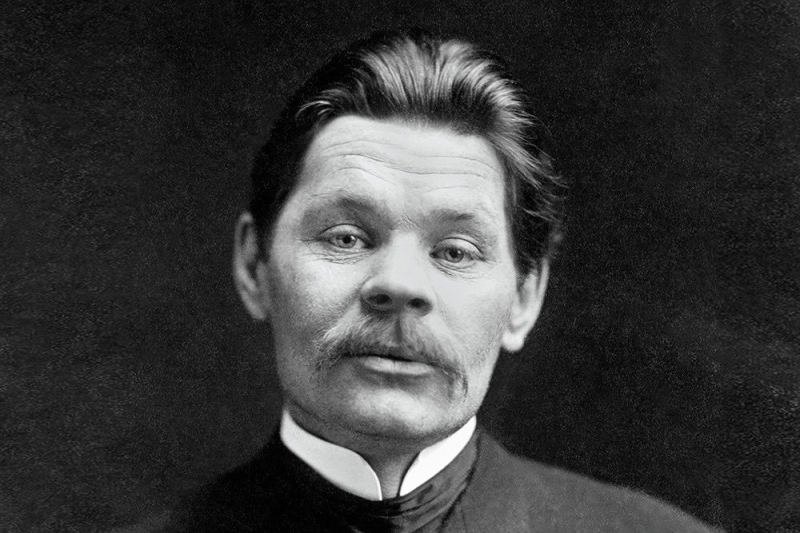
March 28 marked the 150th anniversary of the birth of the classic of Russian and Soviet literature, the main proletarian writer and “petrel of the revolution” Alexei Maksimovich Peshkov, better known under the pseudonym Maxim Gorky. Few people know that Gorky was a major publisher and a fairly wealthy man. Not only after the revolution, but also long before it, he lived in grand style and could afford long trips abroad.
To illustrate Gorky’s thirst for wandering, we need to remember that in his youth he walked the entire Russian south: the Volga region, Don, Ukraine, Crimea, the Caucasus… Impressions from these travels formed the basis of the series of stories “Across Rus’ “.

Photo: Young Maxim Gorky/Anton Chekhov, Leo Tolstoy and Maxim Gorky. Yalta, 1902/© RIA Novosti
But Gorky found himself abroad for the first time, already being a world-famous writer and part-time member of the RSDLP. In January 1906, shortly after the defeat of the first Russian revolution, Gorky, on behalf of Lenin, went through Finland, Sweden, Germany, Switzerland and France to America to raise funds for the party treasury. He was accompanied by his common-law wife, actress Maria Andreeva, and bodyguard Nikolai Burenin. From France to America, Gorky sailed on the liner Frederick William the Great, where he had a luxury cabin with a huge desk, living room, bedroom, bathroom and shower. Having visited New York, Boston and Philadelphia, where he participated in rallies organized by Americans sympathizing with Russian socialists, Gorky collected $1,200, a considerable sum for those times.

Photo: Gorky with Maria Andreeva at a dinner in his honor in Boston, 1906/© RIA Novosti
And then he settled on Staten Island at the mouth of the Hudson, on the estate of American philanthropists, the Martin couple, where he began writing his most famous novel, “Mother.” However, a scandal soon arose in the American press: Gorky was called a bigamist (he really was not divorced from his first wife),
and he had to leave the USA.
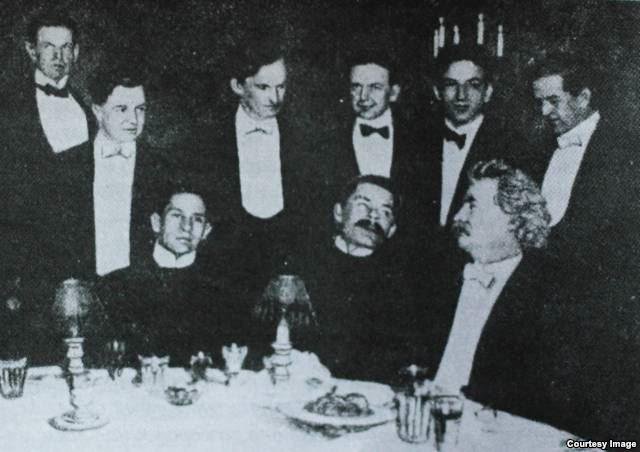
Photo: Maxim Gorky and Mark Twain at a lunch at the Writers’ Club/Coutesy Image
In September 1906, Gorky returned to Russia for a short time, and in October he left for a long exile in Italy. At the pier in Naples, Gorky was greeted by crowds of people. Today it is difficult to believe that at the beginning of the 20th century the fame of a writer could be akin to the current fame of a movie star, but this is a fact. For the Italians, Gorky was a martyr of the revolution in the spirit of Garibaldi, who miraculously escaped the bloody clutches of tsarism and was now forced to hide abroad. And although this was not entirely true, the Italians were ready to carry Gorky in their arms.
After spending some time in Naples, Gorky moved to the small island of Capri. A few days later he wrote to Leonid Andreev: “Capri is a tiny piece, but tasty. In general, here at once, in one day, you see so much beauty that you get drunk, go crazy and can’t do anything…”
At first, Gorky and Andreeva settled in the Quisisana hotel. Today this hotel is called Grand Hotel Quisisana 5* and is part of The Leading Hotels of the World association. Ernest Hemingway, Jean Paul Sartre, Tom Cruise, Sting and other famous people stayed here.
Many believed that Gorky had his own villa in Capri, but this was not the case. Over the course of seven years on Gorky Island, he changed three places of residence. In November 1906, Gorky and Andreeva rented the Villa Blaesus,
belonged to the Settani family. She was in one of the most picturesque places in Capri. Today the Villa Krupp hotel is located here, from the terrace of which there is an amazing view of the sea and Marina Piccola Bay. Lenin came here to visit Gorky, who at that time was also in exile, but in France.
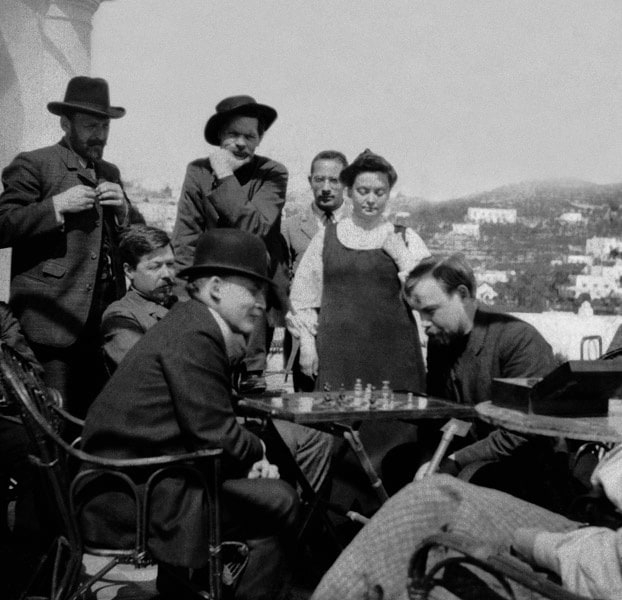
Photo: V. Lenin visiting M. Gorky plays chess with A. Bogdanov/Yu.A. Zhelyabuzhsky/“ Proletarian Revolution”, 1926, No. 1.
In the spring of 1909, Gorky moved to the Spinola villa, built by Nobel laureate in medicine Emil Bering. Today it is called Villa Beringa. It is located at the end of Via Longano. It is quite easy to recognize it, because it differs from other houses in its bright burgundy color. Gorky lived here for two years, until February 1911.
Gorky’s life in Capri was not the life of a hermit. His house was constantly crowded with people. For some time, there was even a party school in Capri, where Russian workers and students learned the basics of revolutionary struggle.
The Italian journalist Mario Baccardo, in his article “On the Island of the Sirens” in “Il Giornale d’Italia” wrote: “Many Russians came to Capri, but not noble gentlemen, but employees, teachers, students from St. Petersburg, Moscow, Vilna, Kyiv. They manage to make the trip thanks to long-term savings… They come to Capri because Maxim Gorky lives here. They gather here and live like one family, help each other, study from common books.”
Gorky had many guests from Russia: Bunin, Chaliapin, Novikov-Priboy, Leonid Andreev, Lunacharsky, Dzerzhinsky and many others. Gorky was a very hospitable host: “Come,” he wrote to the artist Vasily Kachalov, “we will swim in the blue sea, catch sharks, drink white and red Capri and generally live.” You’ll have a great rest…”.
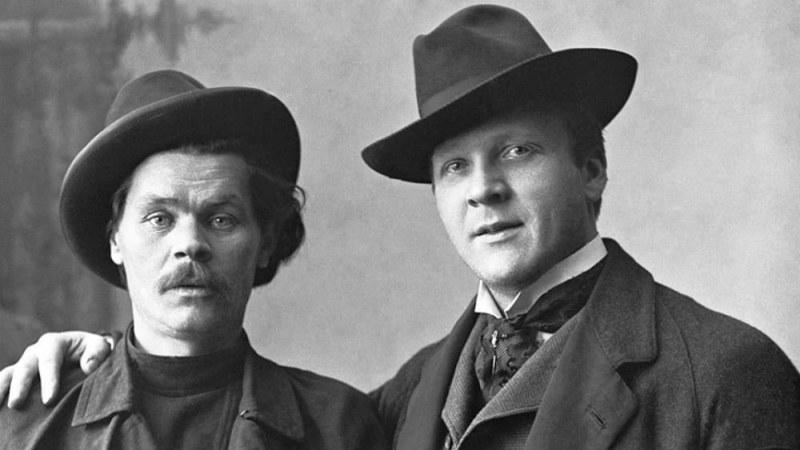
Photo: Maxim Gorky and Fyodor Chaliapin/© RIA Novosti
And finally, Gorky’s third place of residence in Capri is Villa Serfina (now renamed Villa Pierina). Here he lived from the spring of 1911 to the end of 1913. In a letter to his adopted son Zinovy Peshkov, he wrote about Capri: “It’s amazingly beautiful here, some kind of infinitely varied fairy tale unfolds before you. The sea, the island, its rocks are beautiful, and people do not spoil this impression of carefree, cheerful, colorful beauty. What kind of musicians they are, if you could hear them!.. They have a lot of natural gaiety, naivety, thirst for the beautiful, and there is nothing that would remind you of the Italians of America… The democracy that here, especially after America, is very captivating is very captivating.” .
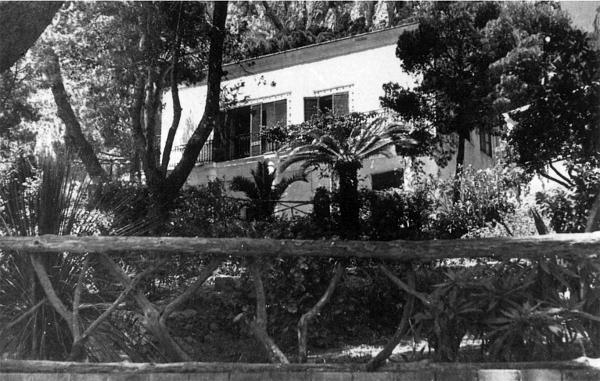
Photo: House on Capri, where Gorky lived for many years/A.P.N.
Gorky didn’t sit idle on Gorky Island either. He visited Florence, Rome, Genoa… In 1907, he visited London as a delegate to the V Congress of the RSDLP, and in 1912 – in Paris, where he once again met with Lenin. Of course, Gorky, remembering his youth, walked around the whole of Capri. Even climbed his highest mountain, Monte Solaro.
And, of course, Gorky wrote. The stories “Childhood” and “Confession”, the play “Vassa Zheleznova”, 27 short stories that made up the cycle “Tales of Italy” – all this was written in Capri.
In 1913, in honor of the 300th anniversary of the House of Romanov, an amnesty was declared for political emigrants, and Gorky returned to Russia. However, seven years later, the writer went abroad again. Lived in Helsingfors, Berlin, Prague, and then moved back to his beloved Italy. Officially – to treat chronic consumption, but in fact he was simply shocked by the cruelty of the revolution, which he so called for in his works.
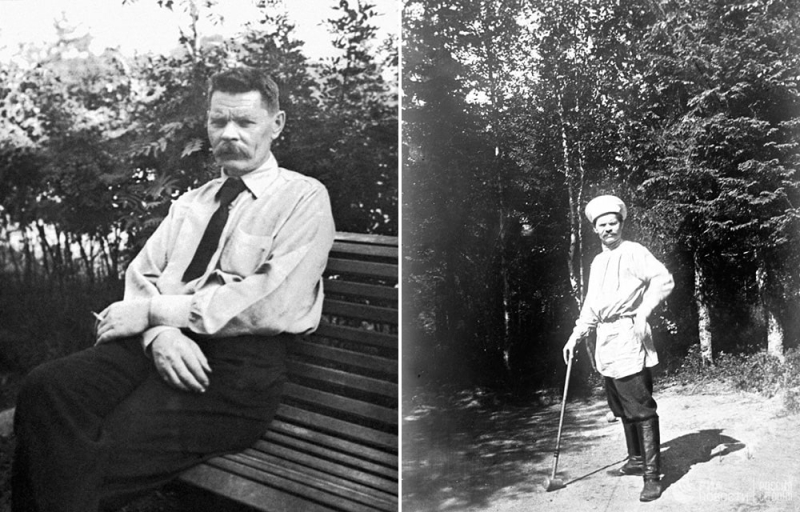
Photo: In Berlin, 1921/In Finland, 1904 — 1905/© RIA Novosti
In the spring of 1924, Gorky, with his new passion Maria Budberg and many household members, settled in Sorrento. “I haven’t been to Capri and I don’t plan to,” he wrote in one of his letters to his homeland. — They say it has become very noisy, fashionable and expensive. In Portnoi, Posilipo, Pozzuoli, in Bailly, we found nothing for ourselves. I’m in a hurry to work and will sit down at the table as soon as we move to Sorrento, and the young people start looking for a home.”
A home was found in the villa “Il Sorito”, located on the rocky cape of Capo di Sorrento. The view from the villa’s balconies, as always, was stunning: Vesuvius, the Bay of Naples and the picturesque town of Castellammare.
In May 1928, yielding to Stalin’s persistent requests, Gorky came to the USSR, but until 1932 (when he finally returned to the Soviet Union) he spent every autumn and winter in Sorrento.
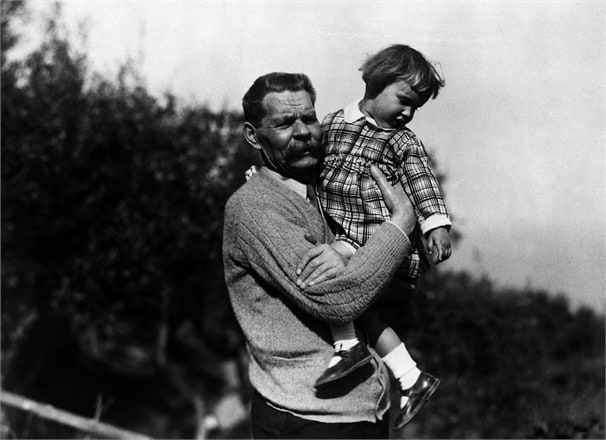
Photo: Maxim Gorky holding his niece in his arms. Sorrento, 1928/©Bettmann/CORBIS
As a result, Gorky lived abroad for a total of more than 18 years, of which 15 years in Italy. It is interesting that during this time he did not master a single foreign language, having learned only one phrase in Italian – “buona sera” (“good evening”).
Text author: Dmitry Rzhannikov
Preview photo: © RIA Novosti

